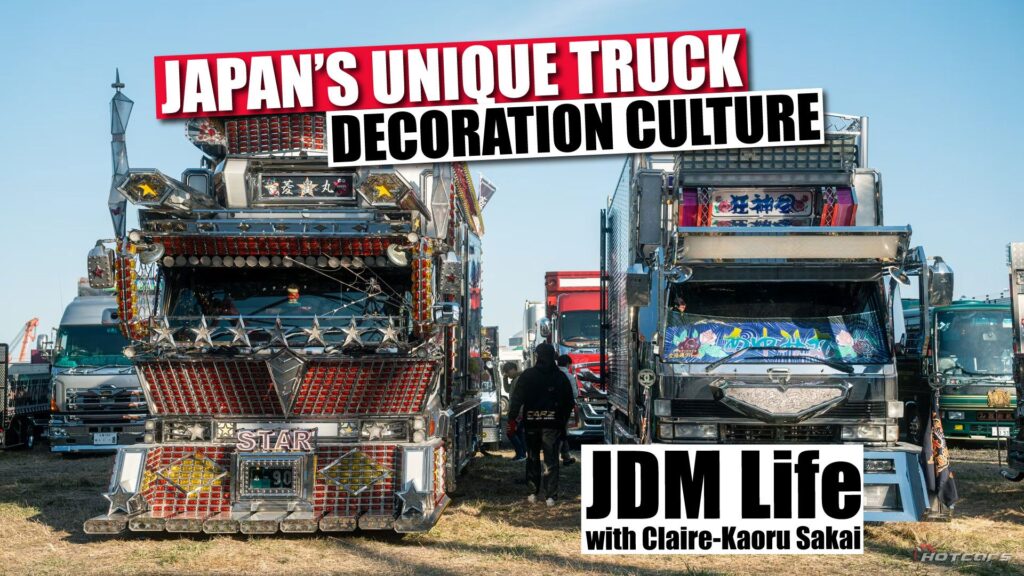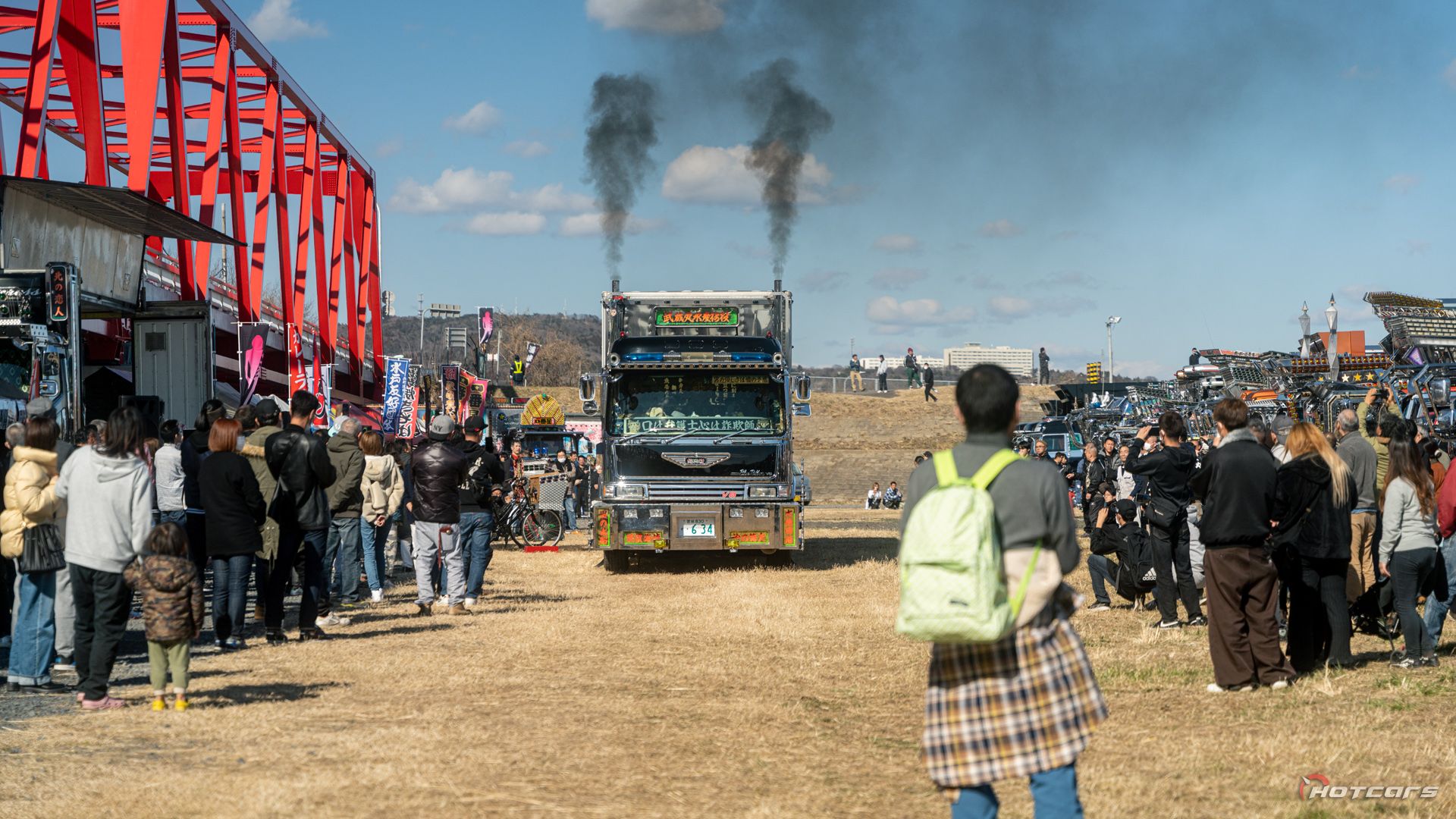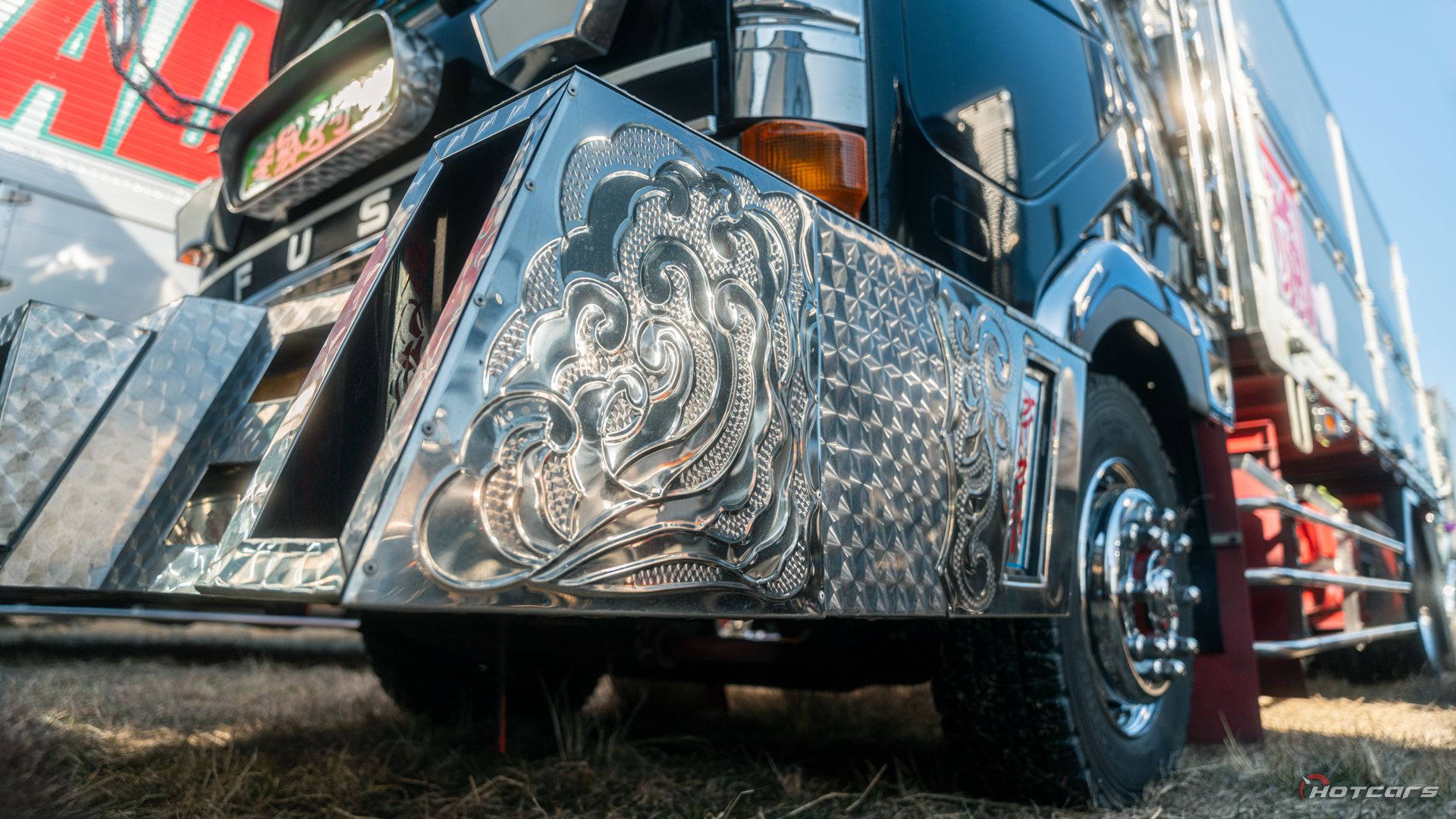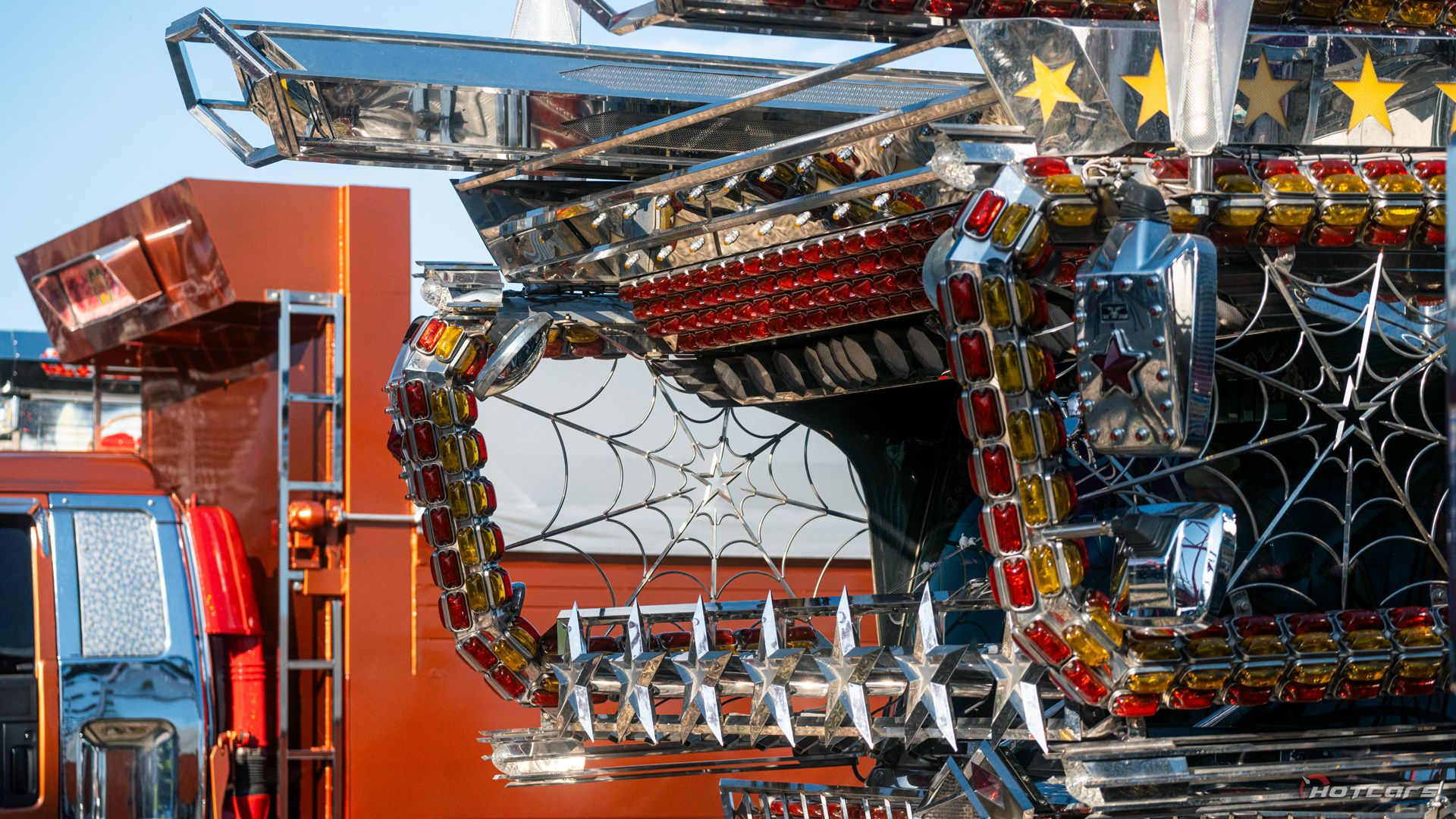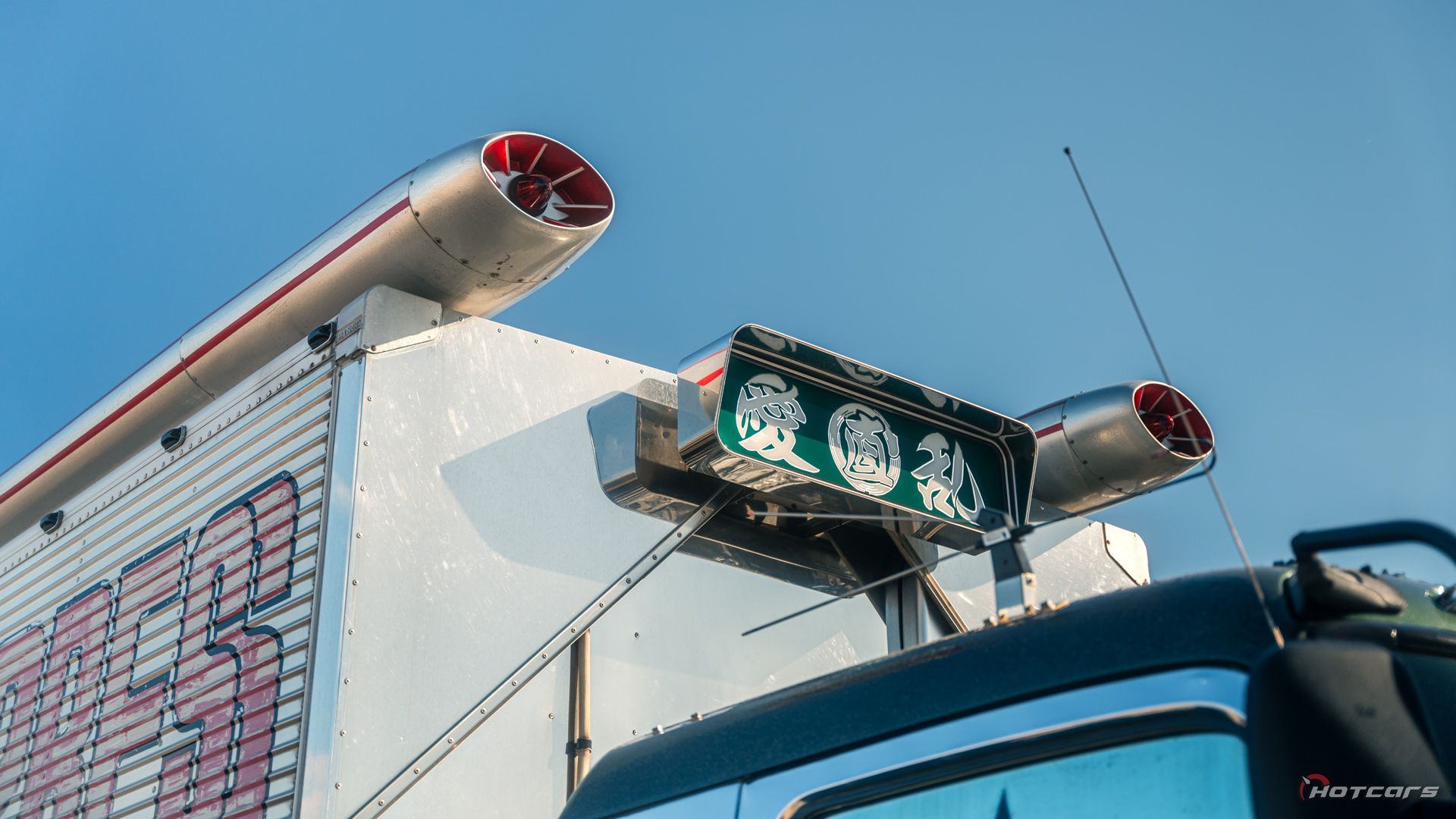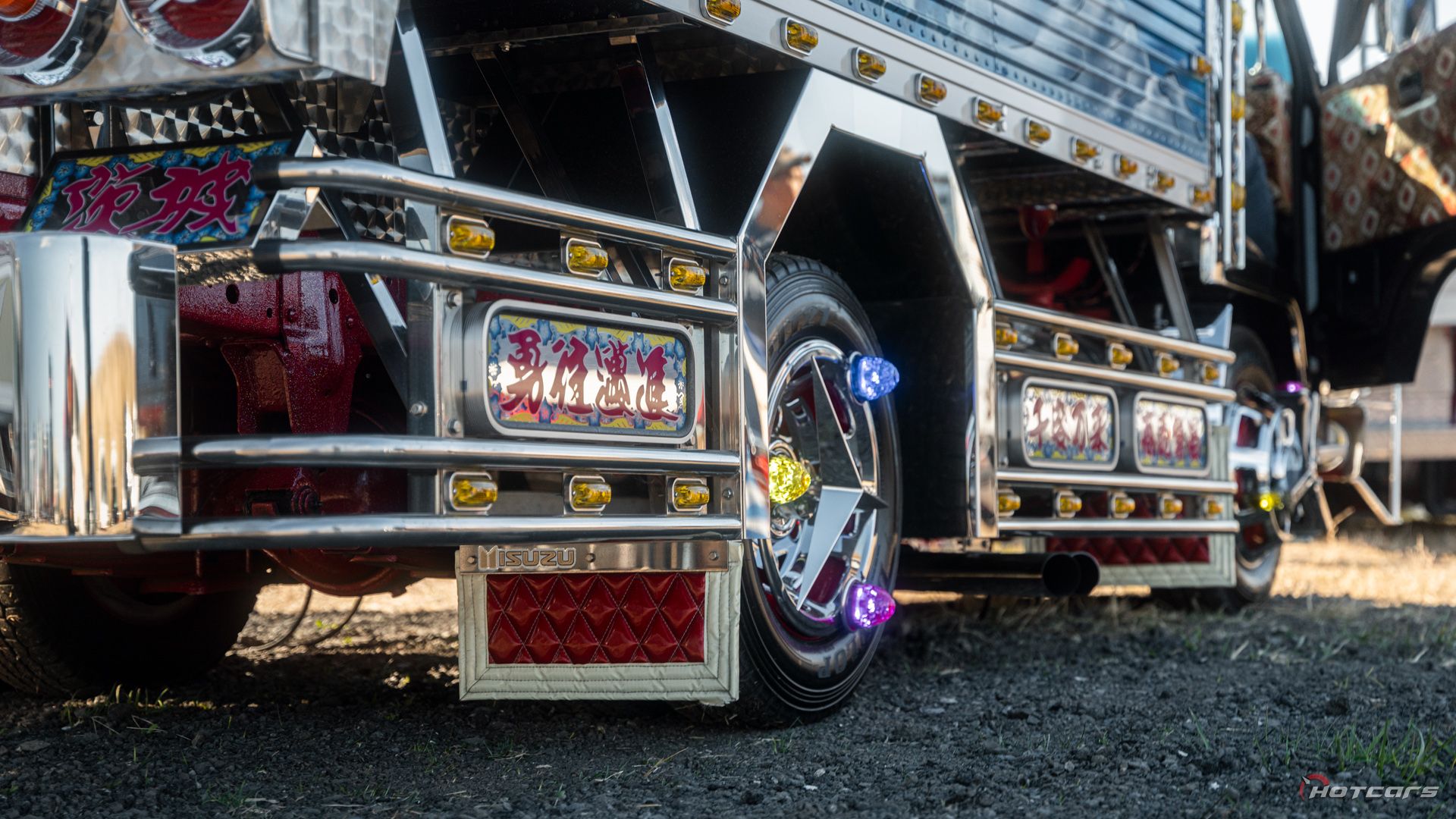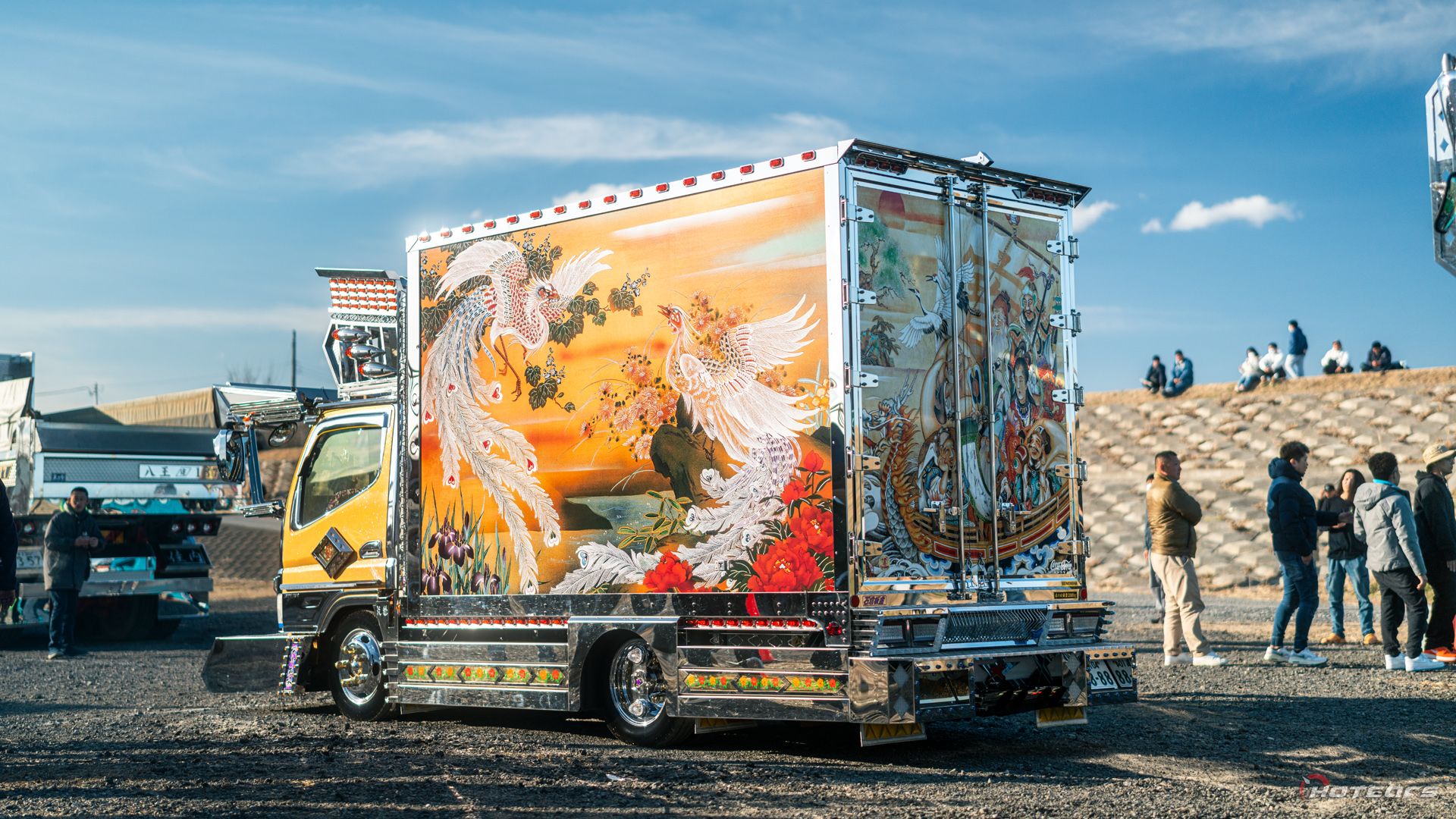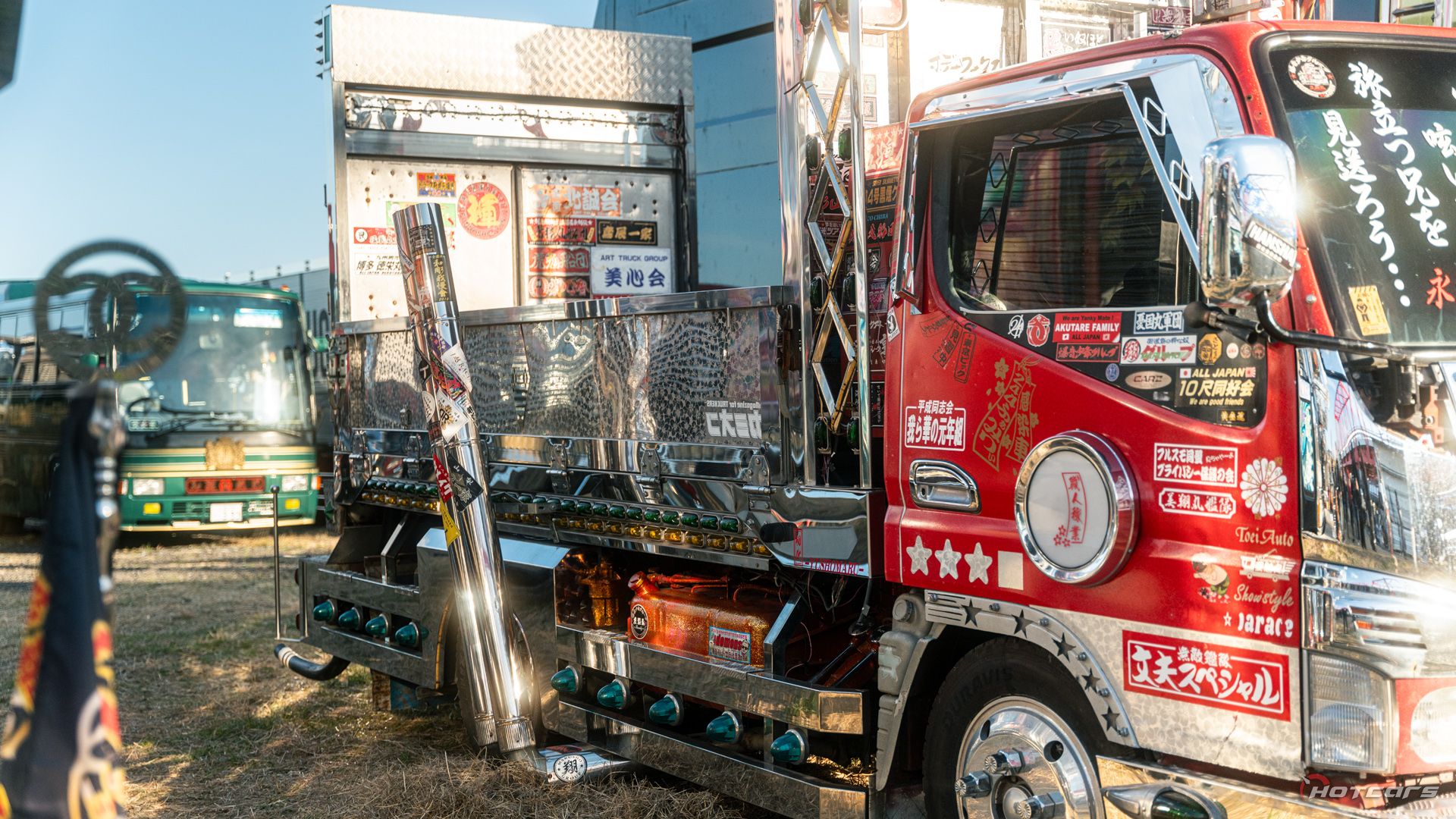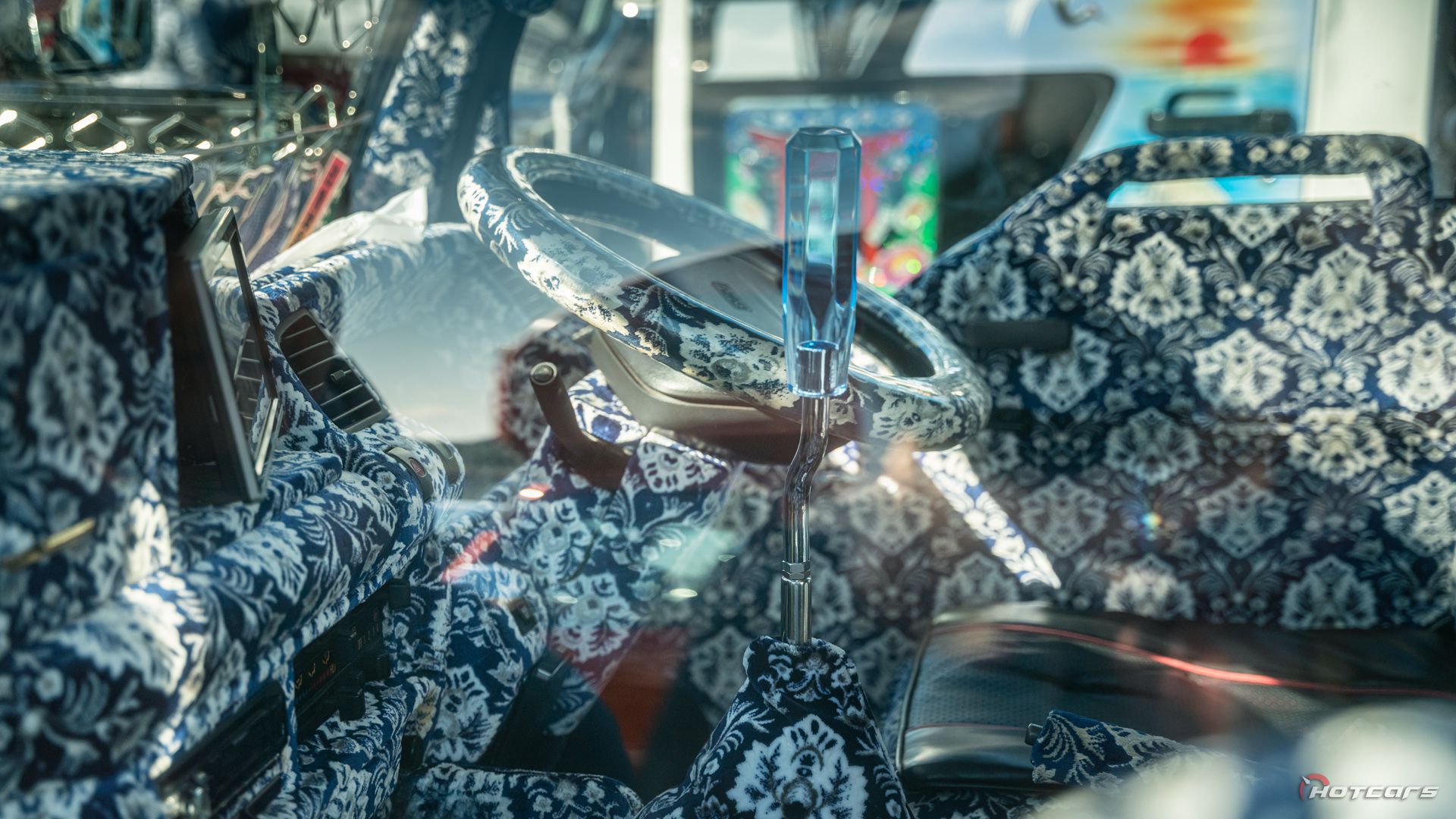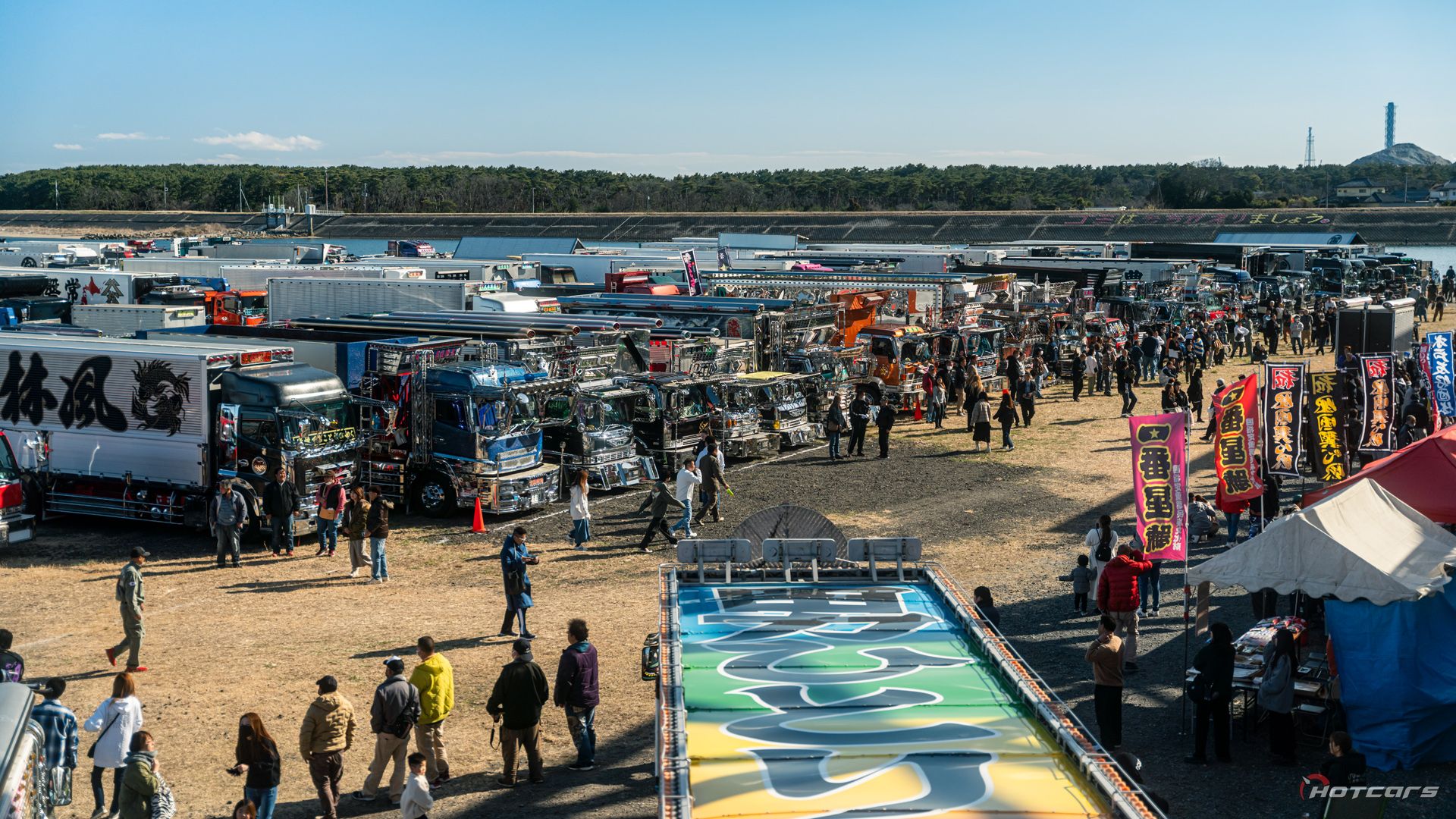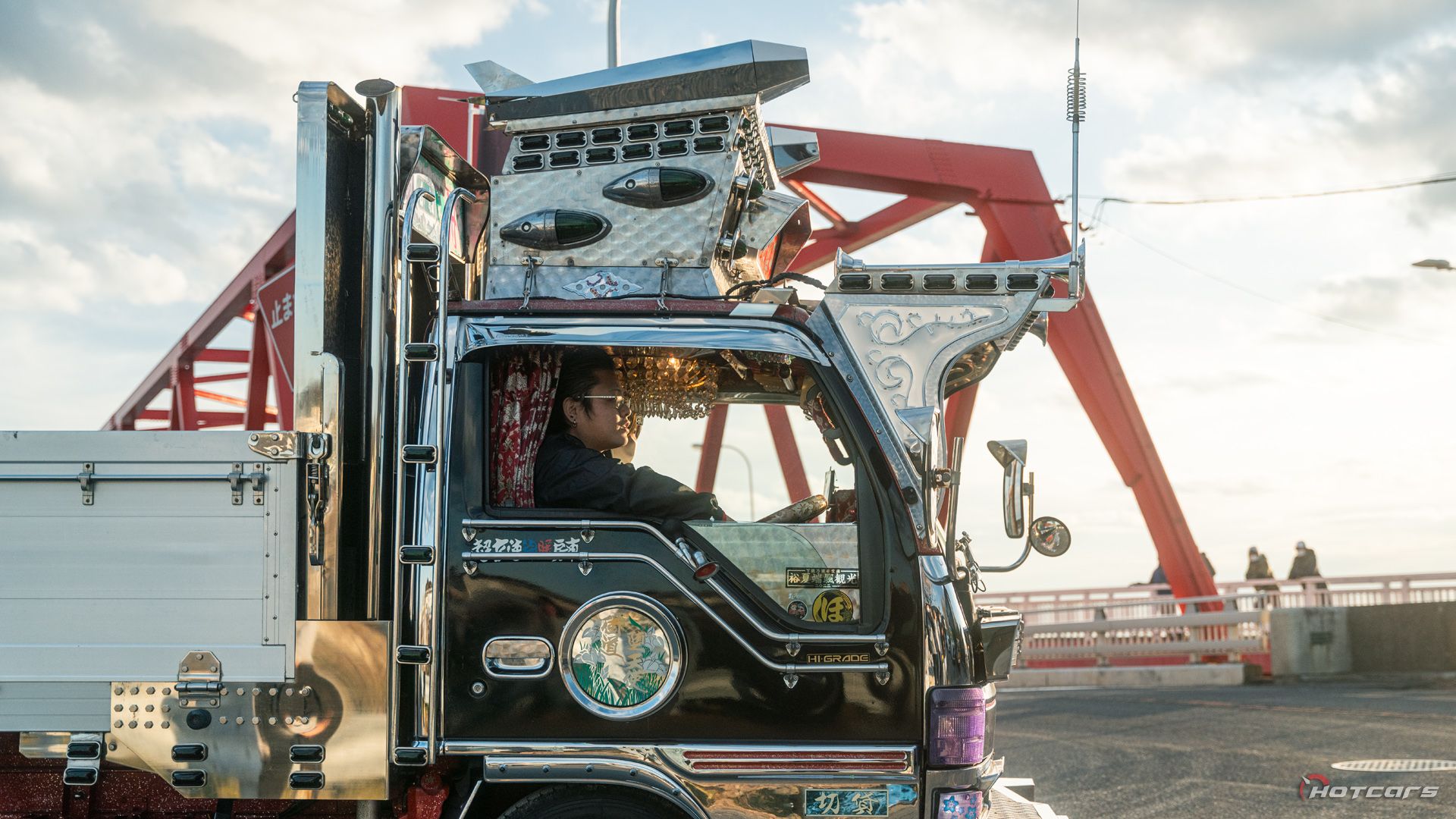Key Takeaways
- Functionality meets art in Japan’s unique truck decoration culture, rooted in truck owners’ efforts to protect their vehicles from salt damage.
- Dekotora trend gained momentum from popular culture references, like the “Truck Yaro” movie series and “Camion” magazine’s launch in 1984.
- Decline of dekotora culture due to regulations and industry shifts poses a threat to this mesmerizing and fragile art form in Japan.
I happen to live not too far from Japan’s most famous fish market in Toyosu, where restaurant owners, chefs, sushi masters from all over Tokyo gather early in the morning to pick the freshest fish to serve to their customers. The Toyosu fish market was originally known as the Tsukiji fish market, but got relocated to a new and much more spacious facility a few years ago. Now at the intersection of wide main roads and near major highway ramps, the new fish market has become more accessible, facilitating traffic for large trucks.
Despite being Japanese myself, I am no sushi expert. However, I do know a good thing or two about the trucks that go in and out of the Toyosu fish market. I see trucks drive in and out of the facilities early in the morning and late at night. Drivers often stop by the nearest convenient store for a snack or a cigarette break, and as they drive away, their trucks’ loud exhaust sounds resonate through the buildings. I’ll often notice trucks with large paintings and at night, it’s the brightly colored lights attached to trucks’ wheels or bumpers that catch my attention. These are “dekotora” trucks.
Unlike the JDM car culture, Japan’s dekotora culture is a little known topic in the western side of the world, and I would even go as far as classifying it as obscure. Information available in English being scarce, I went digging through pages and pages in Japanese for weeks to put together the ultimate guide to navigating dekotora culture. From “front decks” to “uroko stainless steel,” here is all of the information and vocabulary you need to immerse yourself in Japan’s unique truck decoration world.
The Functional And Cultural Origins Of Dekotora
The word ‘dekotora’ is a Japanese portmanteau word, mixing the words “decoration” and “truck.” Dekotora (sometimes locally referred to as “art truck”) stands for the unique truck culture here in Japan, where truck owners and drivers decorate their trucks to various levels of extremes. While you could draw a few parallels between the dekotora culture and Japan’s custom car culture, the dekotora origins are rooted in something much more functional.
While modified cars are mainly a result of style and performance, the truck decoration trend began mostly out of simple necessity, back in the 1960s. To fight the salt and rust damage caused to trucks that were transporting fresh fish and other fresh seafood products, drivers started adding various stainless steel parts to their trucks to protect and extend the longevity of their trucks.
“the truck decoration trend began mostly out of simple necessity […] to fight the salt and rust damage caused to trucks that were transporting fresh fish”
The dekotora trend then gained traction through popular culture, especially thanks to the widely popular movie series “Truck Yaro” (“Truck Rascals”) released from 1975 to 1979. Mixing action and comedy, the series introduces main character Momojiro Hoshi and his 11-ton truck “Ichibanboshi.” Aboard his truck, Momojiro drives across the country, races other trucks, at times runs away from the police and often finds himself unlucky in love. As the nickname Ichibanboshi translates as “first star,” his truck is heavily decorated with star motifs. Another notable truck in the series belongs to antagonist Shinichi Chiba. Nicknamed “Jaws,” Jaws is a blue tanker truck with a large painting of the white shark from the world-acclaimed 1975 movie of the same name.
This growing trend for truck appreciation and truck decoration was reinforced with the launch of “Camion,” a Japanese truckers’ magazine first published in 1984. Camion was the first magazine focusing on dekotora culture, which not only contributed in the popularization of dekotora but also helped share truck-related news and knowledge to a much wider audience.
What Makes A Truck A Dekotora?
Types Of Trucks
For the heavily decorated trucks, you’ll know a dekotora when you see one, but don’t expect to run into those while out on a night stroll in Tokyo. For the majority of trucks out there today, decorations are more on the subtle side and that does not exclude them from being part of the dekotora community. Going to a dekotora meet, heavily decorated trucks will naturally get a prime display spot, but you will commonly find less decorated trucks too.
When it comes to the types of trucks, you’ll find anything from large trucks to small kei trucks. While local manufacturers such as Hino, Mitsubishi Fuso and Isuzu are most commonly spotted, I have come across foreign trucks, such as a decorated Scania truck. Because trucks are first and foremost functional vehicles, dekotora culture embraces all types of trucks. This ranges from dump trucks, flatbed trucks, refrigerator trucks (reefers) all the way to small kei trucks. You’ll even find bus owners and bus drivers as part of the dekotora community, with fully decorated buses on display.
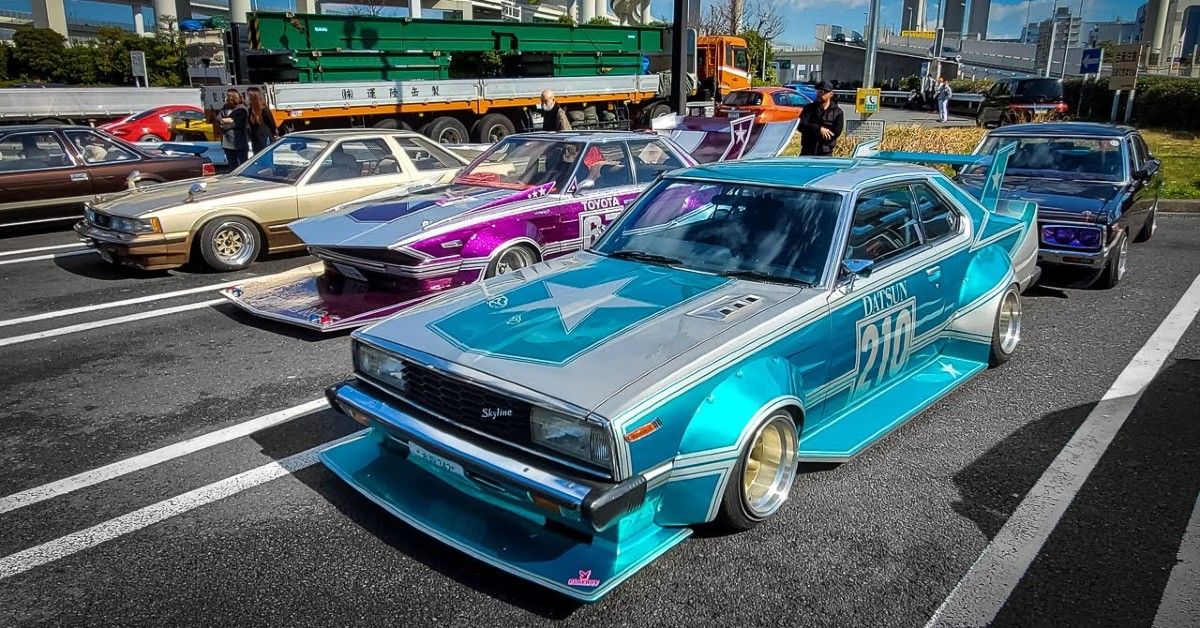
Related
These Are By Far The Weirdest Car Modifying Trends To Emerge From Japan
While Japan has provided us with plenty of cool cars and awesome mods, they’ve also done some seriously weird stuff to their cars.
Dekotora Parts And Decorations: A Detailed Guide
When I first immersed myself in the dekotora culture, understanding the dekotora style felt confusing and foreign. Trucks are imposing vehicles, everything looks metallic, and there is a lot of decoration to pay attention to. Yet after spending time observing truck after truck, it became quite apparent that, just like modified cars, there was a pattern in what to modify and how.
Front Decorations: Front Bumper
While no dekotora looks the same, you can distinguish similar parts and details at the front of the truck. It all starts with a massive, protruding front bumper, which is often considered as one of the key decorative parts of the truck due to its size and visual impact. Front bumpers vary in styles: double-bumper style, Cadillac style, boat style, russell type are some of the common bumper styles you can find on dekotora. The double-bumper style creates the illusion of two stacked bumpers. Cadillac style bumpers are shaped similarly to the 1950’s and 1960’s vintage Cadillacs’ nose that you’d find on an Eldorado or a Coupe DeVille. Boat style bumpers imitate the shape of a boat’s bow and “russell” style bumpers evoque the shape of a snow plow.
Front bumpers often house various decorative details that range from daytime running lights of all shapes and sizes all the way to small decorative figurines and objects. A common decoration item are “rocket markers,” which are rocket-shaped markers located on the sides of the bumpers. Another common detail is “uroko” stainless steel, which is the name given to the scale pattern on stainless steel. While typical stainless steel patterns such as “checkers plate” have an anti-slip, functional purpose, the uroko pattern is mostly a form of decoration.
Front Decorations: Side Mirrors
Trucks’ side mirrors are also a major decorative point thanks to the arm on which mirrors are placed. The black, plastic arms usually found on your average truck are most of the time replaced with intricate metallic arms. Mirror arms are embellished, engraved, adorned with lights and decorated with small objects. Some of the best decorations I came across included metallic spider webs, lizards, dragonflies and marine-themed mirror arms with anchors hanging.
Front Decorations: Front Deck And Visors
Above the driver’s cabin is where you’ll find the front deck and the visor. A dekotora deck is often decorated with a backlit nameplate. In the Truck Yaro movies, the name plate indicates the trucks’ names such as “Ichibanboshi” or “Jaws”. More commonly, it is where truck companies will place their company name in stylized fonts.
There are generally two main types of decks for drivers to choose from. The “birdcage deck” resembles a bird cage with its boxy shape and mesh pattern, while the “rocket” deck style is, as its name implies, a deck decorated with rocket-shaped tubes. The rocket deck is essentially composed of two long tubes resembling booster rockets, placed on either side of the truck’s roof. One of the trucks I spotted at a dekotora meet took this rocket theme a step further, transforming his truck into a tank-like machine, with a deck framed with tubes shaped like missile launchers, and tying it all together in a military green paint.
The deck can be completed with a visor, which can help shading drivers from the sun, though it is most of the time installed as a decorative element. You can usually find two main styles of visors: the “straight” type or the “boat-shaped” type. These are pretty self-explanatory, with the straight visor being a straight panel and the boat-shaped visor imitating the shape of a boat’s bow.
Side Decorations: Side Bumpers, Paintings, Ladder and Wheels
The sides are often kept more plain and simple when compared to the front or the back of a truck. The truck type also influences the amount of decoration that can be added. Flatbeds, cement trucks and towing trucks only allow minimal decorations due to their function, while reefers and their large panels naturally offer more surface for owners to decorate.
Side decorations include paintings, side bumpers, ladders and wheel decorations. You can commonly find trucking company names painted in large and stylized fonts, either written in roman alphabet, or in Japanese kanji for a more traditional look. Additionally, the ladder on the side of the truck is often an important statement piece for truckers.
Some dekotora add side bumpers, but a majority of trucks keep things simple and only add a few light touches of decoration. For example, wheels are commonly decorated with “wheel markers,” which are round, LED markers installed on each of the wheels. Relatively discrete, LED markers light up at night.
Rear Decorations: Paintings
The rear of the truck, especially for reefers and their flat, wide surface, is the prime spot to display flamboyant paintings of various themes. For trucks in the fishing industry, it is quite common to find paintings that relate to their industry, with fish, boats, waves, and other ocean-themed elements. Overall, paintings are varied in styles and I was able to spot ukiyo-e paintings, paintings of kabuki characters, characters from Japanese tales such as “Momotaro,” One Piece manga characters, paintings of mythical animals like phoenixes and dragons, the Grim Reaper… In short, there are no rules in what to paint and truckers often aim for something grandiose that reflects their personal tastes.
Rear Decorations: Bumper, Lights, Exhaust Pipes
While some truckers will add a modified, metallic rear bumper to their truck, rear bumpers remain overall more modest in comparison to front bumpers. Additionally, truck owners will swap their tail lights for something of a different shape. You’ll commonly find square-shaped or round-shaped tail lights, but more extravagant lights are star-shaped or heart-shaped.
To tie it all together, truckers modify their trucks’ exhaust system, completing the bold visuals with an equally impactful sound. A wide majority of dekotora choose to modify their exhaust pipes, which creates a loud whistling, machine gun-like sound. Visually, some might keep the exhaust hidden, while some will go all out and redirect their exhaust pipes to the side in a Bosozoku style or even all the way to the front deck.
Interior Decorations
Dekotora interiors are customized according to each trucker’s personal preferences. While some prefer to keep it relatively simple, it is not uncommon to see fully transformed interiors, almost similar to Japanese VIP cars’ interiors. In the driver’s cabin, you’ll often find an all-velvet interior with a preference for Damask pattern. Chandeliers are also quite common though I’ve also spotted disco balls, and the gear knob is often a transparent, crystal-shaped knob with decorations such as flowers or bubbles in it.
For the trucks that have retired from the transportation industry, customization has no limits and some owners even go all the way to transforming the back of their trucks into cozy living rooms. There, you can find all things that will make the space a comfortable lounging area. Chairs, sofas, TVs, small tables or bookshelves full of mangas for occupants to read.
2:26
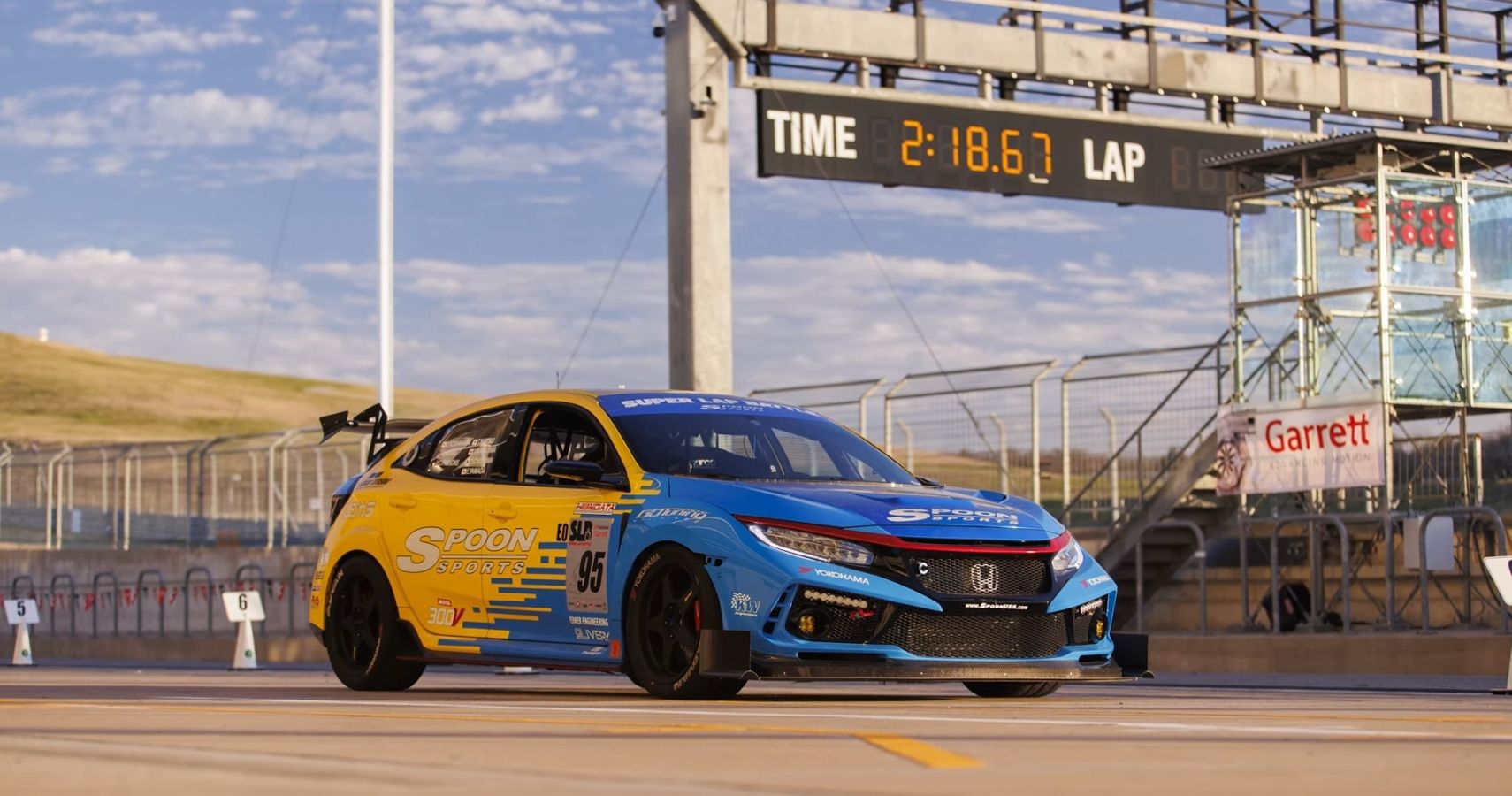
Related
The 10 Most Iconic Tuning Shops In The Japanese Auto Tuning Scene
Stemming from Japan’s incredible tuning scene, these influential tuning shops are responsible for most of the coolest JDM builds out there.
Dekotora Culture Might Not Be Around For Much Longer
According to the Japan Trucking Association (JTA), trucks carry more than 90% of cargo across the country. Unlike rail, trucks can go from door to door and transport goods to remote areas, making trucks a valuable mode of cargo transportation in a country where terrain is estimated to be 73% mountainous. With Japan being so heavily reliant on its truck industry, it almost seems absurd to say that its truck decoration culture is dwindling. Yet, key industry shifts have been at the root of this dekotora decline.
Perhaps the major blow to the dekotora industry has been the transition to cleaner trucks, with late 1990’s governmental regulations forcing companies to abandon diesel engines with high emissions of PM and NOx pollutants. A great majority of decoration trucks emerged during the dekotora trend from the 1960’s all the way to the late 1980’s, which meant that most trucks had become unusable after regulations were passed. This pushed truckers to switch altogether to brand new Truck decorations being particularly costly due to the sheer size of it all, trucks for their businesses, while keeping their truck creations as private vehicles. Truck decorations being particularly costly to customize and maintain due to the sheer size of it all, new trucks were left undecorated or only lightly modified.
Furthermore, with the transportation industry rapidly expanding over the decades, major transportation companies emerged and with it a need to keep a uniform, standardized and reliable fleet. However, smaller companies in rural Japan still own and allow lightly decorated trucks. It is also common to find independent contractors that drive their own dekotora trucks, but the decorations are far from what you’d see in Truck Yaro.
The world of dekotora is a mesmerizing one but also a fragile one. Stepping onto the grounds of a dekotora meet, the sight of so many trucks gathered in one place is humbling. The amount of details on each truck is fascinating and each truck is the result of the owner’s dedication to create the artwork of their lifetime. Dekotora culture is made of a community of like-minded people who work in the transportation industry, sharing the same passions and struggles.
Japan’s trucking industry is a challenging industry, and it is also an industry that faces many challenges: long working hours and low pay, as well as acute driver shortages due to the aging and decline of the Japanese workforce. With such major issues truckers face on a daily basis, reversing the decline of dekotora culture is a complex undertaking. While we still can, documenting and spreading the word about it could help extend the longevity of what is certainly one of Japan’s most fascinating subcultures.
